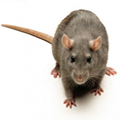 In this study we set out to ask a very basic but fundamental question: how much genetic diversity is maintained in populations of wild rats?
In this study we set out to ask a very basic but fundamental question: how much genetic diversity is maintained in populations of wild rats?
The most important influence on the amount of genetic variation in a species is its long term size. Until starting this project, I would have assumed that rats must have a massive population size, with their worldwide distribution and their weedy reputation. However, their recent expansion is associated with human movement and trade. Before that, the centre of biodiversity for rats and other murid rodents was South Asia. We don't really know how common they were in that original range and this leaves an open question - how big was the historical population and how genetically diverse are modern rats?
To answer this question my postdoctoral supervisor, Peter Keightley, in collaboration with Yao-Hua Zhang, Lin Cong, Yu Wang, Jian-Xu Zhang collected DNA samples from over 20 rats from from the ancestral range in China. An additional 8 rats from the UK were later added to the sample. Getting these samples proved more difficult and ultimately required buying rat corpses from exterminators. These additional black market rats let us measure how the genetic variation might have been influenced by the migration out of Asia.
Despite my expectations that rats would be genetically diverse, reflecting their large contemporary population size, we found that wild rats harbour very little genetic variation. We quantified this by looking for differences in the sequence of their DNA across ~30 genes. In these genes rats had about a 10% the variation found in wild mice. Not surprisingly rats from the UK had less variation. It is a common finding that populations recently founded from a source population have less genetic variation. This happens because only a fraction of the individuals from the source population are involved in the colonisation and if it happened recently there hasn't been enough time for new variation to arise by mutation.
It remains to be studied, how much variation there is in other populations of rats. We expect that the Chinese rats should represent the historical rat population but it is possible that other populations in and around China may harbour more genetic variation. Although, this seems unlikely because the variation in the UK population was a simple subset of variation in our Chinese sample. If there were other more diverse groups out there its likely the UK population would reflect that. So it would seem that although rats are widespread now, it hasn't alway been this way. Historically, brown rats were a small species and their recent association with humans has been a fruitful one.
